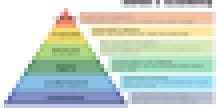I read an interesting article in EdSurge last week about how current educational technologies do little to move learners beyond rote recall of knowledge and it caught me off guard. It was not the belief that technology has yet to be harnessed to its highest potential that surprised me. It is true that many fields are only starting to see the benefits technology brings to their work. What struck me most was the narrative in the article, which seemingly compared the role of technology to the role of pedagogy. While educational technology does make learning visible, it is the teacher that makes learning meaningful.
As educators and curators of educational technology we know that technology is a tool that complements instruction. As such, the strength of the tool is predicated on its use by a skillful educator. There are certainly some exciting and revolutionary innovations and technology as a tool can be quite powerful if it encourages creative discovery or reinforces foundational knowledge. We crawl before we walk, just like we memorize sight words before we write prose. What follows are four ways that technology transcends analog tools in education, including those that demonstrate simple recall while providing valuable feedback to fuel learning to the true innovators in our classrooms: teachers.
A Tale of Two Taxonomies
The referenced article cites Bloom’s cognitive taxonomy, a scale of increasingly complex levels of thinking that students demonstrate as they learn—moving from rote recall to higher order skills like creation and evaluation. This taxonomy provides verbs that describe the cognitive processes students use during learning. For example, a student in the application category is able to implement or execute existing knowledge in novel tasks. This is an important skill that students demonstrate whether they’re applying Pythagorean’s theorem when presented with a novel problem or writing alternative endings to a favorite fairy tale. In the article, author Jared Silver uses Bloom’s taxonomy to suggest technology can more optimally engage learners. And while this may be true, it is the teacher who is the guide on the side scaffolding learning across these increasingly complex categories.

By contrast, Reuben Puentedura’s SAMR model suggests increasingly complex ways that technology impacts the classroom. From tools that substitute to those that redefine the nature of instruction, technology is seen as a tool that has the potential to impact the nature of teaching. For example, technology tools in the augment category provide teachers with improved ways of interacting with students. This is evident in the way that Google Forms transform exit tickets by quickly and efficiently identifying areas of confusion, highlighting opportunities to dive in to the next day’s lesson.
Bloom’s taxonomy is essential for teachers to identify student’s levels of thinking, whereas Puentedura’s taxonomy is essential for teachers to identify the tools that can be used to innovate on instruction. The two are not synonymous and point to two potential views of technology and education: one where the technology guides instruction, and the other where skillful teachers guide instruction supported by technological tools. As a student of cognitive science, I hold strong to the work of Lev Vygotsky, which suggests the latter and posits technology as a cultural tool. In the SAMR model, technology in the hands of a knowledgeable educator can transcend traditional teaching and learning in four distinct but impactful ways.

The SAMR model was created to help teachers reflect on how they’re using technology today while paving the way towards impacting their students’ future. The four levels move from simple substitution, to augmentation, modification and finally redefinition, where each successive level increases the tool’s impact on the classroom. Research shows that each level has had an effect on learning, here we dive deeper into some of the tools teachers are already using that are making significant impacts on classrooms worldwide.
Substitution: Oxford meet Oxford 2.0
The simplest level of the SAMR model is substitution. Tech tools at this level serve the same purpose as their analog counterparts without changing the nature of teaching or learning. For instance, a student may refer to the Oxford online dictionary instead of meandering to the class library and sifting through the pages to find the word “obfuscate.” These tools may be used to introduce students to real scientists through Skype a Scientist instead of relying on Bill Nye videos (which I still think are pretty terrific!).
On the surface, substitution tools do not appear to significantly shift the nature of learning. But digitally documenting a student’s inquiries through substitution tools makes learning visible and provides formative feedback. For example, when my students create a digital concept map in coggle about a unit on biodiversity, they substitute a paper and pencil version of a concept map with a living document that can be shared and revised from home or school. While the process of creating a concept map has not shifted, teachers can observe iterations in student learning and more accurately and quickly meet students in their “just right zone”.
Augmentation: Student and Teacher Driven Tools
Augmentation level tools are powerful ways of providing both student and teacher-driven feedback for learning.Augmentation tools may ask students to understand or apply their knowledge, lower-order verbs on Bloom’s taxonomy, while providing teachers with evidence of student learning and a clear focus if they need to pivot their instruction in real time.
Socrative, Kahoot and TopHat, are great tools for augmenting assessment, especially in flipped classrooms. These digital tools gamify the process of learning and help teachers quickly assess topics that require either more or less discussion, allowing students to move to independent and group work faster. Plickers are a low stakes and low tech way of ensuring students have a solid understanding of content before moving on. Seamlessly integrating into lessons, tools like PollEverywhere invite students to quickly share their interests, knowledge, questions and even hopes around a content area in real time. Most importantly, these tools mean that student responses can be used as feedback to create more relevant experiences and more meaningful instruction.
Modification: Old Problems, New Lens
Tools that modify classroom tasks encourage students to demonstrate understanding and create new ways of solving old problems. Nearpod accomplishes this by taking a traditional lesson and infusing real time assessment, interactive experiences, and differentiated extensions. These tools become truly transformative when they’re used by teachers.
Modification tools are those that redesign typical classroom tasks like book reports and science projects. Typical book reports become Siskel and Ebert style video reviews using tools like YouTube Capture. And when teachers ask difficult questions about the impact of abiotic factors on marine environments students can respond using a video through new tools like FlipGrid. What is more, students can respond to teacher prompts by creating their own books or narrate new endings to a story by creating a digital comic strip or their own book using tools like Book Creator.
Redefinition: Ground Control to Major Tom
It is true that technology’s impact on education is only just beginning, but ed tech tools are already redefining the way we teach and learn. No longer are we relegated to imagining weightlessness when our students listen to storytime from space as real astronauts read childhood favorites aloud while suspended in zero gravity at the international space station. Flipping the classroom is a redefinition of traditional instruction made possible by technologies like Educreations where carefully curated learning prepares students to actively apply learning.
Traditional models of engaging and assessing students are wholly transformed by tools that redefine teaching and learning. In art class, painting in watercolors becomes a three-dimensional rendering using tools like Google’s Tilt Brush. Not only are growing artists able to demonstrate their understanding of depth and color but so too are their classmates able to take a walk through a shared 3D museum. Technology in education is helping break the barriers of access providing field trips to remote and exciting locations like the surface of the moon or the surface of a cell. And while medical students hone their surgical skills using tools like Osso VR, Olympic athletes gain a competitive advantage engaging in simulation tools created by STRIVR.
Learning Is the Outcome, Tech Is Just a Tool
The potential of these tools resides in their ability to untether our nation’s teachers from the physical boundaries of their classrooms and untie our nation’s students from arbitrary groupings while unleashing an exciting new level of truly immersive learning. To harness the true utility of these tools we must continue to address the digital divide that perpetuates inequities in our classrooms by not only bringing high speeds to our classrooms but also access to the tools that students and teachers need to support our most valuable assets, our future citizens.
A single tool, even with the greatest AI, will never be a panacea for education. But technology does help teachers take learners to worlds beyond their imagination while making learning visible and actionable. Tools that help make learning visible allow teachers to scaffold instruction and meet the needs of all of their learners. When teachers are empowered with the resources they need to thrive, students win.


